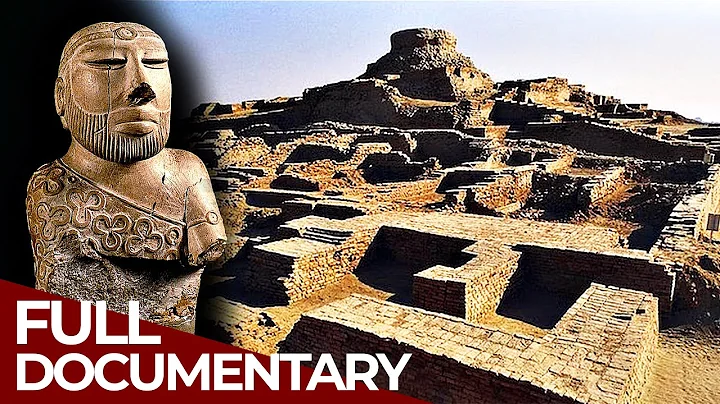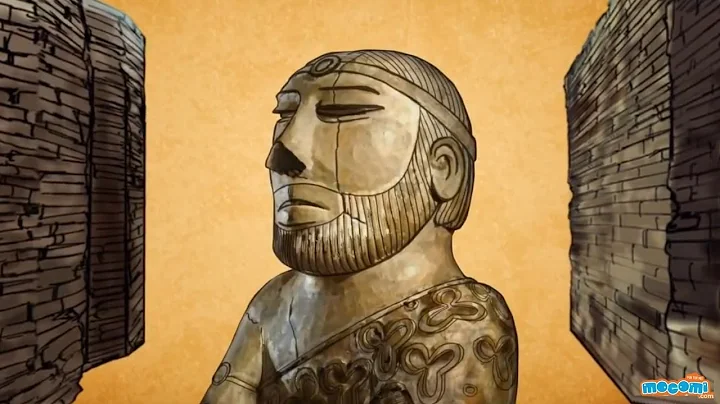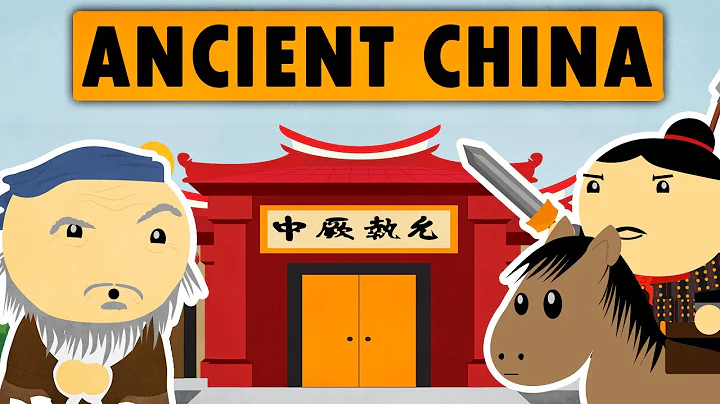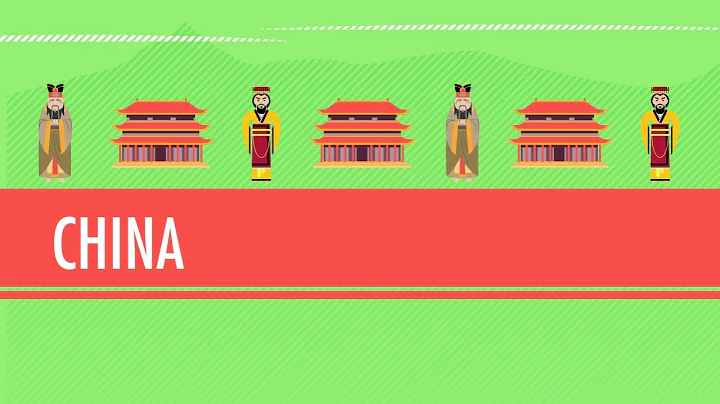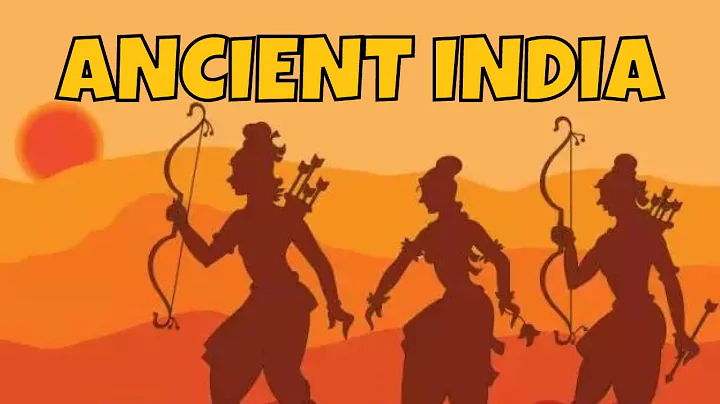1, Indus Valley Civilization period (about 3300 BC to 1300 BC), which is equivalent to China's Five Emperors and Three Emperors period to the middle of the Shang Dynasty. It is also called the Harappan Civilization and is the earliest civilization on the Indian Peninsula. It is also the origin of Indian culture. Its civilization flourished during the eight hundred years from 2600 BC to 1900 BC and lasted for about two thousand years. The scope of influence is mainly located in the Indus River Basin and the Saraswati River basin, that is, the eastern part of Pakistan and the northwest and southwest of India. Representative cities include Mohenjo-Daro City and Harappa with a population of over one million. City, this civilization was created by the Dasa people, a branch of the native Indian ethnic group Dravidian people . The reason for its demise is unknown (foreign invasion, climate change, ecological fragmentation, etc. are all possible). It was later conquered by nomads from Central Asia. Replaced by the Vedic civilization created by the Aryans .

Indus Valley Civilization Coverage
2. The Vedic Civilization Period (about 1500 BC to 600 BC) is equivalent to China's Shang Dynasty to the mid-Spring and Autumn Period. Created by the Aryans, a nomadic tribe from Central Asia, they came to South Asia through the Khyber Pass in Afghanistan. They first settled in the northwest of the Indian Peninsula (now the Punjab Province of Pakistan), then continued eastward along the Ganges River Basin, and finally Conquered the northern area of South Asia where the original Dravidians lived, that is, the entire Ganges River Basin. By establishing ancient Brahmanism, they gradually developed the Vedic civilization, which lasted for about nine hundred years and covered half of the country east of the Indus River Basin, west of the mouth of the Ganges, south of the Himalayas, and north of the Malwa Plateau. peninsula of India. Finally, due to the rise of Buddhism and the rise of ancient feudal city-states in India, India immediately entered the "Age of Nations" and the Vedic civilization ended.

Vedic civilization covers civilization
3. The Indian Kingdoms Period (about 600 BC to 300 BC) is equivalent to China's mid-Spring and Autumn Period to the late Warring States Period. Also known as the Buddha Period and the Sixteen Kingdoms Period, this is because the rise of Buddhism and the emergence of city-states coincided with this period. This period lasted for about three hundred years, and 16 city-states with large scale and strength appeared. nation. These " Sixteen Kingdoms" are respectively Jashi, Jisaluo, yangjia, Magadha, Fulitian (Vaqi), Moluo, Zhiti, Vacca, Julu, and Panchaluo. , Mochaya, Shurasena, Ashibo, Apandi, Gandhara , Ganbocha (Jian Zhensha) Kingdom, among which Magadha Kingdom is the most powerful. The Kingdom of Magadha is located in the northeastern part of the Indian Peninsula and downstream of Henge. It has developed agriculture, a prosperous economy, and a large population. It is precisely for this reason that after experiencing the four dynasties of Hari, Youlong, Nanda, and Peacock, it finally After Chandragupta, the Moon Protector (reigned from 322 BC to 298 BC) overthrew the Nanda dynasty and established the Maurya dynasty, he began the journey of unifying the Indian subcontinent, and eventually the other countries in the northern part of the Indian peninsula. They were all conquered by the Mauryan Dynasty established by Lord Moon Guardian, and the era of Indian kingdoms came to an end.

Location of various countries in the Age of Indian Nations (about 600 BC)
At the same time, the western region of ancient India, the Indus River Basin, was successively occupied by the Persian Empire the Achaemenid Dynasty (519 BC to 326 BC) and Conquered by the Alexander Empire (326 BC to 320 BC), after the death of Alexander the Great due to the outbreak of the "Successor War", the huge empire instantly fell into pieces, and this place became the territory founded by Alexander the Great's general Seleucus. The ruling territory of the Seleucid Empire (320 BC to 304 BC). However, soon due to the peace treaty concluded between the Seleucid Empire and the Mauryan Dynasty, the Indus River Basin changed hands again and became the territory of the Mauryan Dynasty.

The territory of the Alexander Empire at its peak (around 323 BC)
4. The Nanda Dynasty (424 BC to 321 BC) is equivalent to the middle period of the Warring States Period in China. The Young Dragon Dynasty before it was already the Henglong Dynasty. A powerful country in the middle reaches of the river, it unified most of the Ganges River Basin during its rule, and finally continued to expand the unification achievements under the successor of the Mauryan Dynasty, Lord Moon Guardian.

The largest territory of the Nanda Dynasty (about 323 BC)
5. The Maurya Dynasty (322 BC to 184 BC, the period that ruled India was about 300 BC to 65 BC), which is equivalent to the late Warring States Period in China To the early Eastern Han Dynasty. The founder of the Maurya Dynasty, King Yuehu, unified northern India around 300 BC, and during the reign of his grandson Asoka (reigned from 269 to 232 BC), the Maurya Dynasty even unified Except for the entire South Asian subcontinent except the southern part of the Deccan Plateau of the Indian Peninsula (which is the territory of the indigenous Indian Dravidian people), the ancient Indian region ushered in the first great unification in history. Buddhism in ancient India also The king's reign ushered in the most prosperous and glorious period. Unfortunately, with the death of King Ashoka, the originally unified Indian subcontinent immediately entered a state of fragmented city-states. This lasted for hundreds of years until the Kushan Empire invaded the Ganges and Indus river basins of ancient India from the south in the middle of the 1st century. Only then did we usher in unification again.

The largest territory of the Maurya Dynasty (265 BC)
6. The Kushan Empire period (existed from 30 to 375 AD, but ruled India from about 65 AD to the end of the 3rd century AD), equivalent to China's Eastern Han Dynasty period. Northern and western India came under its rule. The Kushan Empire was formed by the Yuezhi people, a nomadic people from Central Asia (the Yuezhi people originally originated from the Hexi Corridor of our country and were later forced by the Huns and moved to Central Asia. Finally, they defeated the powerful Central Asian country of Daxia and became the overlord of Central Asia). It was established when the second-generation monarch Yan Gaozhen (65 to 75 AD) had conquered the Indus River Basin and the upper reaches of the Ganges. to 102 AD) during his reign, he expanded his territory to the middle reaches of the Ganges River. The Kushan Empire began to decline after the death of Kanishaka I. Its last king, Vesudeva I, succeeded to the throne at the end of the 2nd century AD. It was eventually encroached and divided under the threat of the rising city-states of Sassanid Persia in the west and the native Ganges River Basin.

The territory of the Kushan Empire in the early 2nd century AD
At this time, the Indian Peninsula south of the Ganges River and east of the Indus River was ruled by many kingdoms and tribes. The larger area in western India was dominated by Central Asian nomads The West Satrap Dynasty created by the Kitai people (existed from 35 to 405 AD, surrendered to the Kushan Empire), Hundreds of Dynasties created by the indigenous people of central India (1st century BC to AD Existed in the 2nd century, and long competed with the West Satrap Dynasty in the west).

Baicheng Dynasty territorial expansion map
VII. The Gupta Dynasty period (319 to 550 AD) is equivalent to China's Eastern Jin Dynasty Southern and Northern Dynasties period. After the decline of the Kushan Empire, a powerful empire from Central Asia in the 3rd century AD, the Ganges River Basin once again fell into a state of disorderly multi-national separatism. However, a tribe called Sri Gupta in the lower reaches of the Ganges began to prosper, and through marriages in In the early 4th century, the Gupta Dynasty was established.The Gupta dynasty was established by Chandra Gupta I (reigned from 319 to 335) through a marriage with the Liche tribe, the rulers of Hua Clan in the east. After that, he successively destroyed 21 kingdoms and tribes, and finally conquered Hengda. The middle and lower reaches of the river; his son King Haihu (reigned from 335 to 380) conquered the entire South Asian subcontinent except the Deccan Plateau, and his power reached as far as the Malay Peninsula and Java. Island ; by the time of his grandson King Chaori (reigned from 380 to 415), he not only conquered the remaining resistance forces in the Indus Valley the Maravas, the Gujarati Sai people (ie Sissa The Trapp dynasty) and the Katiavas, etc., also had ties with the Kingdom of Vagādaka in Central India (which existed from about 250 to 500 years ago. It was one of the successors after the collapse of the Baiyana dynasty, and became the Guptas after marriage. dynasty's vassal states). At this time, the only threat to the Gupta dynasty in the South Asian subcontinent was the Pallava dynasty in South India (which existed from 275 to 897, also after the collapse of the Baiyana dynasty). One of the successors of the Pallava Dynasty), but the main enemy of the Pallava Dynasty and its combat energy were placed on the Chola Dynasty (3rd century to 1279) established by the Tamils in the south. Therefore, at this time The Gupta dynasty was the only country in South Asia with no pressure to survive.

The territory of the Gupta dynasty around the 4th century AD
A powerful country in Central India The Kingdom of Vagadaka was one of the successors of the Baiyana dynasty, a powerful country in the central Indian peninsula

The territory of the Kingdom of Vagadaka (375 AD)
The Gupta dynasty was in The reign of Kumarajupta I (reigned from 415 to 455) ushered in its heyday. The country had a population of more than 32 million, an army of 500,000, and hundreds of warships. It was the most powerful empire in the world at that time. This period was also the most glorious period in Indian history. After the death of his son Sajandragupta (reigned from 455 to 467), the Indus River Basin in the northwest of the Gupta dynasty began to face the Central Asian nomads. human invasion. Although the Gyda people were finally driven out of the Indus River Basin by the Gupta dynasty in 533 AD, decades of war had led to the independence of princes in various places. The Gupta dynasty perished soon after, and the South Asian continent once again fell into chaos and separatism.

The territory of the Gada Empire at its peak (around the 5th century AD)
VIII. The post-Gupta Dynasty (550 to about 606), which is equivalent to the late Southern and Northern Dynasties to the middle of the Sui Dynasty in China. After the Gupta dynasty perished due to the invasion of the Gaudas, the originally unified Ganges River Basin once again fell into a state of disorder. After a period of mutual conquest, there were only four powerful countries left in the Ganges River Basin, namely in the upper reaches of the Ganges River. The Kingdom of Tanisha (Pusyabuti Dynasty and Vardanna Dynasty), the Kingdom of Mukri (also known as the Kingdom of Karojuja) in the middle reaches of the Ganges River, and the Kingdom of Malava (also known as the Later Kingdom) in the lower reaches of the Ganges River. The Gupta Dynasty) and the Goda Kingdom at the mouth of the Ganges River (also known as Karana Suvarana Kingdom, Golden Ear Kingdom ), the Tanisha Kingdom and the Mukri Kingdom, the Malava Kingdom and the Gouda Kingdom respectively. It is an alliance, and the first two and the latter two are hostile countries to each other. In the end, the last king of the Tanisha Kingdom, Horisavadana, reunified northern India by conquering and merging other Ganges basin countries. He was the future Harsh King . At this time, the stronger countries in South Asia included the Maitrak dynasty on the north coast of the Arabian Sea, the Chalukya dynasty in the west of the Deccan Plateau, the Pallava dynasty in the southeastern part of the Indian peninsula, and the Deccan Plateau. The Kalachuri dynasty in the northeast, and the Kamolubo Kingdom in the Brahmaputra River Valley (also known as the Eastern Star Kingdom and the Eastern Hui Kingdom). Except for Kamolupa, the other countries are located south of the Ganges; The Chalukya dynasty was the most powerful country in central and southern India , and the Harsha dynasty that followed had a duel and ruled by rivers.

After the Gupta Dynasty (590 AD), the fragmented India
9, Harsha Dynasty (606 to 647 years), which is equivalent to the late Sui Dynasty and early Tang Dynasty in China, also known as the Horisha Dynasty, led by Tanisha The last king of the country, Horishavartan, came by annihilating the Malava Kingdom in the Ganges River Basin and annexing the Mukri and Gauda Kingdoms. In the early stage, it only occupied the middle and upper reaches of the Ganges River. In the later period, it expanded its power to the Indus River and the lower reaches of the Ganges River. However, it was frustrated during its southern invasion. Together with the Chalukya dynasty in the south, it was the two major overlords in ancient India.

Territory map of the early Harsha Dynasty (625 AD)
After the death of King Harsha, his throne was usurped by his powerful minister Aluanashun. It coincided with the visit of Tang Dynasty envoys, and Aluanashun detained the Tang Dynasty envoys. In the end, a battle broke out with the Tibetan people. Aronashun was captured by King Xuance, and the Harsha Dynasty collapsed. The states in the Ganges River Basin in northern India have long surrendered to the Tibetan people in the north.

Territory map of the late Harsha Dynasty (647 AD)
10. Rajput period (mid-7th century to the end of the 12th century), after the demise of the Harsha Dynasty, until the Muslims conquered northern India at the end of the 12th century, Rajput The Puts established a series of countries in the Ganges River Basin in northern India, so they are called the "Rajput Period".

Rajput portraits (painted in the 16th century)
(1) The former "Three Kingdoms Period" (mid-7th century to the end of the 10th century), which is equivalent to China's Middle Tang period to the early Northern Song Dynasty . At that time, there were three powerful kingdoms in northern India that stood in the Ganges River Basin. They were the Quzheluo in the Indus River Basin in western India and the upper reaches of the Ganges River - the Pratihara Dynasty (green part, from the mid-7th century to It existed in 1036. In the later period, it faced the crisis of feudal territories in various regions becoming independent and independent in the center, and the Ghazni Dynasty, a Muslim Turkic country from Central Asia in the west, gradually encroaching. In the end, the king was deposed and his territory was annexed by the Ghazni Dynasty. From this, the Islamicization process began in the western part of the Indian subcontinent), and the Rashidhara Kudha dynasty (orange part, which existed from 753 to 982) on the Deccan Plateau in central and southern India came from the overthrow of the predecessor Chalukya dynasty. During this period, the Western Ganga dynasty and the Pallava kingdom in South India were also destroyed, and were eventually destroyed by the descendants of the Chalukya dynasty. The latter took the opportunity to restore and reestablish the Chalukya dynasty, which was known in history as the "Post-Chalukhi dynasty" or "Western Chalukya dynasty". Chalukya dynasty") and the Pala dynasty in the middle and lower reaches of the Ganges River in northeastern India (purple part, existed from the 8th to the 12th century. It was the last country on the Indian subcontinent where Buddhism was the state religion. It was finally conquered in the late 12th century. The Hindu Sena dynasty in southern India was destroyed. At its peak in 810 AD, the population reached 10.3 million people).

The tripartite pattern of the South Asian continent (750 to 900 AD)
(2) The post-"Three Kingdoms Era" (about 973 to 1187) is equivalent to the early Northern Song Dynasty to the early Northern Song Dynasty in China. The early Southern Song Dynasty. With the collapse of the three great kingdoms of Quzheluo-Pratikhara dynasty in the west, Rashidhara-Kudta dynasty in the south and Polo dynasty in the east, the South Asian subcontinent was once again divided among the three great powers. They are the Ghazni Dynasty that invaded the east (established by the Muslim Turks in Afghanistan, occupying the western Indus River Basin, existed from 977 to 1187, and were destroyed by the Gur Dynasty in Afghanistan at the end of the 12th century. ), the restored Western Chalukya Dynasty (established by the Rajputs, descendants of the Chalukya dynasty who believed in Hinduism, located in the north-central Deccan Plateau, existed from 973 to 1189. It has long been associated with the eastern Chola The dynasty and its allies fought against the Eastern Chalukya dynasty, which led to the weakening of the country's power and the reduction of its territory, which was eventually divided by uncontrolled territorial lords) and the rise of the Chola dynasty (which existed from the mid-9th century to 1279, in The southern part of the Deccan Plateau and the western coastal area of the Bay of Bengal is the most powerful country in southern India, founded by the indigenous Tamil people of India.Rising in AD 985, it not only destroyed the Baltic Dynasty in the lower reaches of the Ganges, but also annexed Sri Lanka and Maldives across the sea, and crossed the ocean eastward to destroy the Malay Archipelago the western power Srivijaya Kingdom. , whose power reached the Malay Archipelago, and the throne was later usurped by the descendants of the East Chaluk dynasty, and was eventually eliminated by the Pandiya dynasty under its jurisdiction due to its decline in the 13th century) and other new tripartite structures. During this period It was roughly located between  73 and in 1187, and lasted for more than 200 years.
73 and in 1187, and lasted for more than 200 years.

Territory map of the Chola dynasty at its peak (12th century)
The Chola dynasty came by annexing the Pandya dynasty and the Cherra dynasty (8th to 12th century), two of the "Tamil Three Kingdoms" at the southern end of the Indian peninsula.

The Three Tamil Kingdoms of Ancient India: West Chola, East Cherro, and South Pandya
Eleven, Gur Dynasty Period (mid-12th century to 1215), equivalent to the late Song Dynasty and early Yuan Dynasty in China, Gur After the demise of the Ghazni Dynasty in the mid-12th century, the dynasty not only occupied the Indus River Basin originally ruled by the Ghazni Dynasty, but also marched to the lower reaches of the Ganges River, and finally unified the entire Ganges River Basin in 1175. By 1206, the governor of the Indian region of the Gur Dynasty Qutbuddin Aybaik (a Turkic-speaking Transcaucasian region Kipchak ), was a slave, had a humble background, and his life experience was comparable to that of the Sixteen Kingdoms of the Five Hus. Before the establishment of the Qutb Shahi Dynasty of the Delhi Sultanate during the Qisan period, that is, from the late 12th century to the early 13th century, the northern and western regions of ancient India had always been the territory of the Gur Dynasty.

Territory map of the Gur Dynasty at its peak (around the 13th century)
The Pandya Dynasty (from the late 7th century to 1371) was a dynasty of South India and North India Gur Dynasty, Delhi Sultanate (Qutb Shahi Dynasty) During the Tughluq Dynasty), it inherited the fruits of the Chola Dynasty's conquests and continued to rule the Maldives Islands and Sri Lanka Islands across the strait.

The territory of the Pandya Dynasty was located at the southern tip of the Indian Peninsula. It occupied the island of Sri Lanka. The north was ruled by the two sultanates of Delhi and Deccan, and the Islamization of ancient India greatly deepened. The Delhi Sultanate is not the specific name of a kingdom, but the collective name of five successive dynasties including the Qutb Shahi dynasty, the Kalji dynasty, the Tughluq dynasty, the Sayyid dynasty and the Lodi dynasty. Its capital was in the Delhi area, so it was collectively called the "Delhi Sultanate" and existed for a total of 320 years in history. In the same year that the Delhi Sultanate was established, the Mongolian leader Temujin unified the various Mongolian tribes and rose to power under the title "Genghis Khan". After that, the Mongolian army began to continuously conquer cities and plunder lands in the west. The ancient Indian region close to Central Asia was naturally not spared. Therefore, the Delhi Sultanate's main focus in the next few centuries was on resisting the Mongolian invasion from the north. The successive dynasties of the Delhi Sultanate withstood the attacks of the Mongol nomadic empires such as the Mongol Empire, the Chagatai Khanate, and the Timur Empire. The national power gradually declined, and eventually died at the hands of Babur, a descendant of the Timurid Empire's royal family Babur .

Chart of changes in the territory of the Delhi Sultanate through the dynasties
The territory of the Delhi Sultanate expanded to the extreme during the rule of the Khalji dynasty (1290 to 1320), which was different from the Bahmani Sultanate (1347 to 1320) in the Deccan Plateau 1527), both one of the two major powers in the South Asian subcontinent, the Bahmani Sultanate was later divided into five, and were eventually annexed by the emerging powerful empire in the north, the Mughal Empire.

The Kalji dynasty in 1525
Thirteen, Mughal dynasty (1526 to 1858, in fact, after the death of the fifth emperor Aurangzeb in 1707, its territory was greatly reduced, and was replaced by the Maratha Empire inherited), equivalent to China's mid-Ming Dynasty to the early Qing Dynasty. The founder of the Mughal Dynasty Babur was a Turkic, Chagatai-speaking Mongolian Muslim with royal ancestry from the Timurid Empire. In view of his complex identity relationship, the Mughal Dynasty he established was extremely Enlightened and tolerant, people of different sects, beliefs and national origins could live in harmony under the Mughal dynasty, and therefore he and his successors could become the last heroes to unify the South Asian subcontinent. After Babur's demise, the Lodi dynasty, the last dynasty of the Delhi Sultanate, occupied the Ganges River Basin in northern India. After his death, during the reign of his son Humayun, the Mughal dynasty was conquered by Sur from the Pashtuns of northern Afghanistan. Dynasty (1540-1557) briefly defeated and occupied it, but then made a comeback with the support of the Safavid dynasty of western Persia, drove away the invaders and successfully restored the country. Several generations of emperors after Humayun worked hard to govern. During the reign of the fourth emperor Shah Jahan (1628-1658), the Mughal Empire ushered in its peak period. The fifth emperor Aurangzeb (reigned from 1658 to 1707) expanded his territory to the largest territory in history (except for the Tamil area at the southern tip of the Indian peninsula). As the saying goes, things must turn against each other. After the death of the fifth emperor Aurangzeb (during his lifetime due to the policy of strengthening Islamization, the rebellion of Sikhs and Rajputs, and the rise of the Eastern Maratha Empire, the Mughal Empire was seriously weakened. The Mughal Empire declined rapidly, and Western colonists such as the British, French, Portuguese, and Dutch came one after another. They established multiple colonial strongholds in the coastal areas of the South Asian subcontinent, gradually encroaching on the territory of the Mughal Empire, and eventually the British Empire After winning the war, the weak Mughal royal family was regarded as a puppet regime. It was not until 1858 that Queen Victoria of England was crowned the "Queen of India" that the Mughal dynasty in ancient India was officially declared dead.

The territory of the Mughal Empire, the last unified dynasty in Indian history
Sur Dynasty (1540 to 1557), was the northern overlord that briefly destroyed the Mughal Dynasty.

The territory of the Sur dynasty was mainly located in the Ganges and Indus river basins
Fourteenth, Maratha Empire (1674 to 1818), which is equivalent to the period from the early Qing Dynasty to the middle of the Qing Dynasty in China, also known as Maratha Alliance, The last ancient Indian dynasty in which Hinduism was the state religion. After the death of Aurangzeb, the fifth emperor of the Mughal Empire, the Maratha Empire took the opportunity to encroach on its original territory, and the Mughal Empire retreated all the way west to the Indus River Basin. In 1761, in a battle with the Durrani dynasty from northern Afghanistan (ie, the third battle of Panipat ), he was defeated by Pearl Khan Durrani (reigned from 1747 to 1772, the first unification in history). The king of Afghanistan), the national power was greatly damaged. As a result, the princes and lords in various regions began to act independently and gradually evolved into a loose confederal system; in 1818, they were defeated by the British Empire in the Maratha War, and the British took the opportunity to annex them. Most of the territory entered "British India", and the Maratha Empire declared its demise. It also symbolized the collapse of the last unified regime in South Asia.

Maratha Empire Territory (1760, yellow part)
15. Extra: Mysore Kingdom ( 399 to 1947 ), which was conquered by the British Empire at almost the same time as the Maratha Empire, was in In 1799, it became a state under the jurisdiction of the British East India Company; and the Bengal region in northeastern South Asia had already become a protectorate of the British East India Company as early as the Battle of Plassey in 1757. Counting the strongholds set up by the British in Surat, Bombay, Calcutta, Madras and other areas on the east and west coasts of the Indian peninsula, Britain had completed its basic occupation of South Asia in the early 19th century.
399 to 1947 ), which was conquered by the British Empire at almost the same time as the Maratha Empire, was in In 1799, it became a state under the jurisdiction of the British East India Company; and the Bengal region in northeastern South Asia had already become a protectorate of the British East India Company as early as the Battle of Plassey in 1757. Counting the strongholds set up by the British in Surat, Bombay, Calcutta, Madras and other areas on the east and west coasts of the Indian peninsula, Britain had completed its basic occupation of South Asia in the early 19th century.

The Kingdom of Mysore, a large South Indian country located at the southwest end of the Indian Peninsula
Note: Ancient Chinese literature about ancient India often mentions a place called Qunu City, which was the capital of the ancient Indian Karujuju Kingdom, located in present-day India. Kannauj, Uttar Pradesh, later became the capital of King Harsha of the Harsha Dynasty. It was also the capital of the three great kingdoms of the Rajput period: the Pratihara dynasty, the Rashidhara Kuta dynasty and the Pala dynasty. It was the most important city-state in northern India from the 7th to the 11th century AD. Xuanzang visited here when he went west to seek Dharma. Finally, with the decline of these three kingdoms and the Central Asian Ghazni Dynasty, Gur The dynasty, the Timurid Empire and others continued to invade and harass the south and gradually declined.




